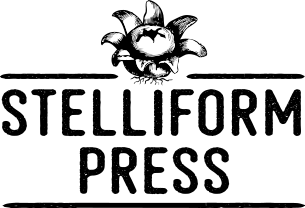Review: “Hello, Hello” by Seanan McGuire
Stories We Love
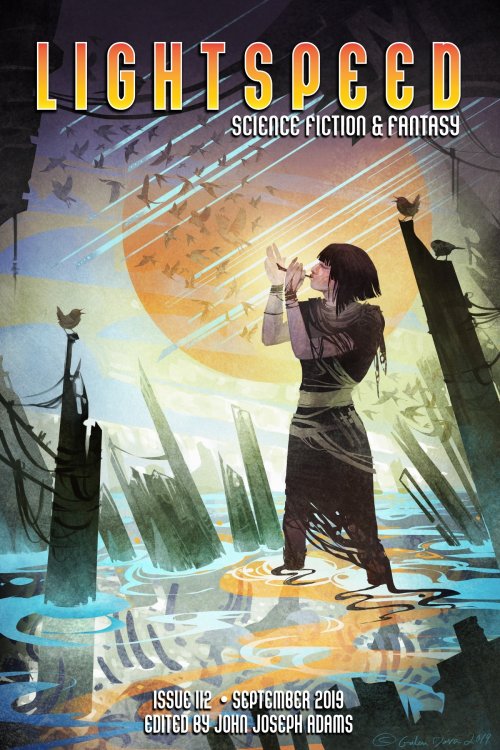
Seanan McGuire’s “Hello, Hello” is a science fiction short story which bridges the gaps between several human and inter-species categories to illustrate that while future technologies will facilitate communication in ways that we cannot now imagine, technology alone is not enough.
“Hello, Hello” is a quiet family narrative in which two sisters — the narrator, a linguist, and her sister, an ornithologist who is deaf and communicates through American Sign Language (ASL) — solve the mystery of several anonymous phone calls placed from the ornithologist’s house. The phone calls, transmitted through an avatar-based video conferencing program which the ornithologist uses to communicate vocally with others who do not know ASL, are intercepted by her sister, niece, and nephew — to the delight of the children. While the story’s narrator (the children’s mother) is alarmed at the idea of a stranger calling her children, the children are captivated by the puzzle of the strange avatar that at first says little more than “hello” but gradually learns through their conversation. Who is this woman who keeps calling? What does she want?
Discovery at the Intersections
This story does a wonderful job of demonstrating the ways in which we need people with different perspectives, different life experiences, to interact with technology — and be a part of development and testing. It is Aunt Tasha’s disability, and the children’s positions as intermediaries between the world of deafness and hearing, which results in the crossing of boundaries to make a significant scientific discovery. Over the course of the story, the children discover that the strange caller is able to understand more of the attempts at communication if they can see the children’s gestures. These gestures, which the translation software has learned through Tasha’s use of ASL to talk to friends, family, and colleagues, bridge the gap between human language and learning and that of birds.
McGuire’s focus on disability, technology, and learning beyond species categories only hints at the wider implications of inter-species communication. We’re reminded of another excellent bird communication story that makes obvious the effects of climate change in shrinking knowledge and possibility: “The Great Silence” by Ted Chiang — one of the final stories in Chiang’s latest short story collection Exhalation. The narrator in Chiang’s story is a parrot who laments the seemingly inevitable extinction of his kind, linking the Fermi Paradox to the Sixth Mass Extinction. The opening lines of the story read:
The humans use Arecibo to look for extraterrestrial intelligence. Their desire to make a connection is so strong that they’ve created an ear capable of hearing across the universe.
But I and my fellow parrots are right here. Why aren’t they interested in listening to our voices?
We’re a nonhuman species capable of communicating with them. Aren’t we exactly what humans are looking for?
“The Great Silence” by Ted Chiang, from Exhalation
Perhaps McGuire’s story makes clear why humans are more inclined to look across the universe than to what creatures live with them, side by side, on this planet: It takes a different perspective than the ones we generally cultivate to counteract the encouragement toward extravagance in exploration and scientific discovery, particularly within the context of our capitalist culture. McGuire underscores the importance of admitting all kinds of people — people with disabilities, people of colour, women, and even children — into the Halls of Science, of broadening our definitions, of learning to listen to these stories before we no longer can.
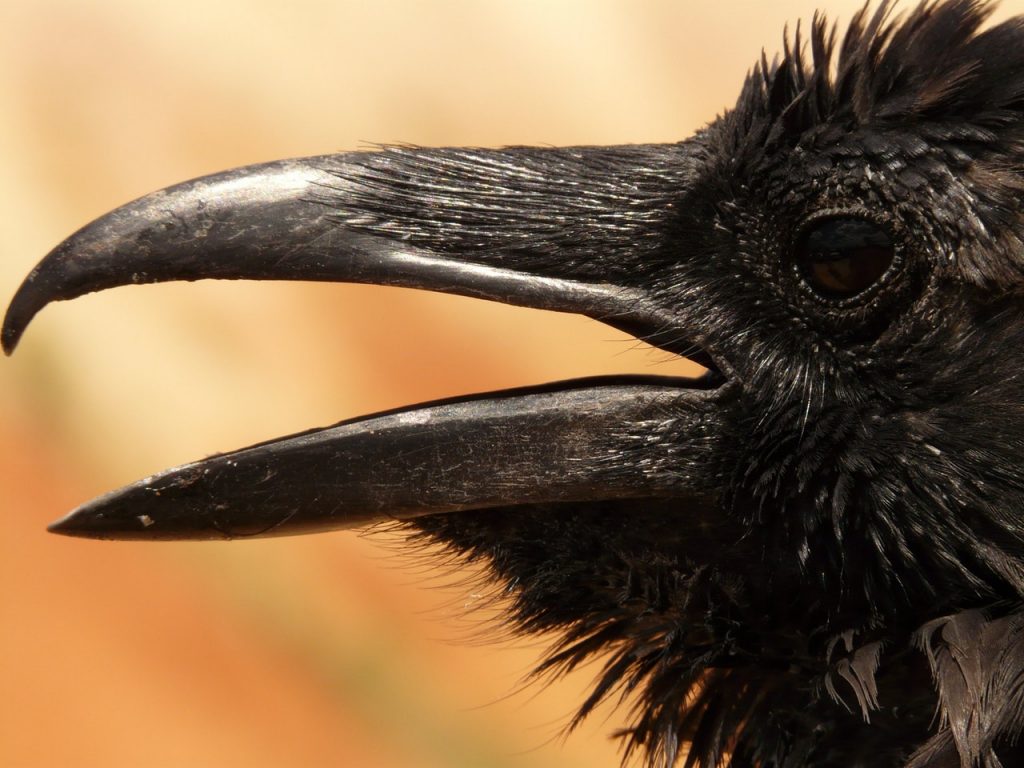
Further Reading
- Seanan McGuire’s “Hello, Hello” in text and audio on Lightspeed
- TechCrunch Book Club discussion of Ted Chiang’s “The Great Silence”
- Science Daily article about bird vocalization syntax
Wet’suwet’en Land Protectors & the Canadian National Narrative
A Publisher’s Note
Stelliform Press is a Canadian literary publisher focused on stories that challenge North American (and, more broadly, Western) attitudes toward nature. Our hope is that if we support and disseminate enough of these stories, they will help change the values and behaviours that have contributed to climate change.
To demonstrate the small ways this is already happening, we have been collecting positive stories of shifts toward relational ideologies and active environmentalism in local communities, and in wider national and international contexts. Our intention in collecting these stories was to give people some hope, to demonstrate that small-scale action can have an effect.
Then the RCMP raided Wet’suwet’en territory, arresting dozens of Wet’suwet’en land protectors in an effort to clear the way for the Coastal Gas Link pipeline. This action by Canadian authorities has since resulted in nation-wide protests, and further arrests. The settler response to these nation-wide protests — and the blockades and resultant rail shutdown in particular — has reinvigorated not only economy-over-environment rhetoric, but also racist arguments which prevent diplomacy and incite violence toward already vulnerable people. It seems inappropriate to post good news eco-stories when this is happening in Canada; but this always happening in Canada. And every other colonial state. This is the perpetual context of environmentalism in the West.
A History of Violent and Unequal Conflict

Violent and unequal conflict between the agents of “progress” and those that live in close connection to the land and want to protect it is a story Canada has told before. The RCMP raid on Wet’suwet’en has historical precedent in Unist’ot’en (a nearby camp), in Oka Quebec in 1990, when developers wanted to build a golf course on contested land, in the Ipperwash Crisis, and even close to the land that Stelliform calls home, in Caledonia, during the Douglas Creek Estates conflict in 2006. All of these incidents occurred within the larger context of the ongoing Indigenous/settler conflict that is Canada itself.
“Taming the wilderness” and “living off the land” in peace and contentment are Canadian national narratives that cannot exist without these conflicts. These narratives are predicated on the idea of terra nullius (nobody’s land), a damaging myth about a land that was always alive with community and relationship. These are beguiling and false narratives, which spring from a conception of life on this continent which did not consider First Nations, Métis, and Inuit as human beings of equal value to the European colonizers and settlers. Continuing to uphold these stories as a part of Canadian identity locks us in not only to more cruelty, but also into a future in which communities and ecosystems suffer from profound disconnection and failure.
A Call to Justice
Anyone visiting this website is probably already concerned with environmental justice issues, and we hope that you will continue to challenge the stories you tell about yourselves and your nations, particularly if you are settlers. But questioning stories is insufficient action for this moment. If you have the resources, please check out the Wet’suwet’en Supporter Toolkit and do or give what you can.
If you cannot give, please speak out about what is happening in British Columbia right now, and all across Canada. Talk to friends and relatives who might have a different view of these events than you do. Write letters to the editor, call in to radio shows, and engage on social media to show your support for Wet’suwet’en and Tyendinaga. The Wet’suwet’en land protectors are defending their land, but they are also modelling justice for the rest of us.
Review: “The Ones Who Stay and Fight” by N.K. Jemisin
Stories We Love
N.K. Jemisin’s “The Ones Who Stay and Fight” is the opening story in the author’s short story collection, How Long ‘Til Black Future Month. The story introduces the collection, as does the book’s title, as a work of fundamentally utopian sff.
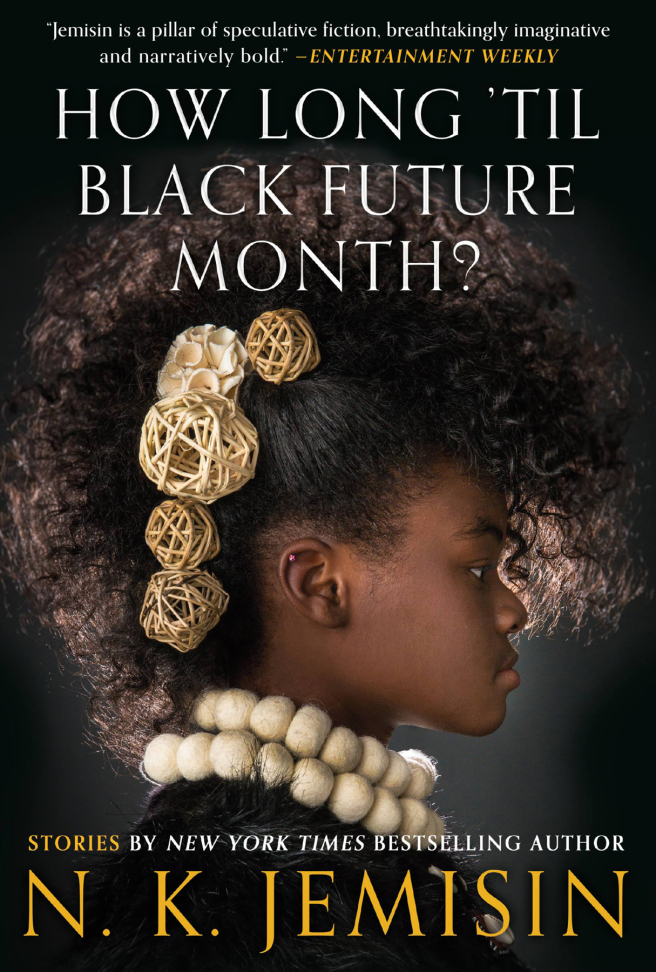
“The Ones Who Stay and Fight” was written in conversation with “The Ones Who Walk Away from Omelas” [pdf], Ursula K. Le Guin’s own challenge to utopia, published in 1973. “Omelas” has been discussed extensively (a recent article on “Omelas” and its utilitarian implications for our own times can be found here) and this review will side-step a comprehensive comparison of “Omelas” and “The Ones Who Stay and Fight”. Instead, the focus here is on Jemisin’s story, its conception of systemic violence, its implicit sense of justice and hope, and how Jemisin’s vision applies to the fight against climate change.
Some readers familiar with both stories may have hoped that N.K. Jemisin’s “The Ones Who Stay and Fight” would reject the “necessary” violence of the previous story. Readers could have been comforted, after all, by a utopia that harms no one and specifically rejects violence perpetrated against innocents. But both Le Guin’s and Jemisin’s stories contain harm to a child. In Jemisin’s story, the child is harmed as a side-effect of preserving utopia. But rather than remain in isolation, as in “Omelas,” Jemisin’s child is cared for — and ultimately educated to become a part of the community mechanism which preserves utopia in Um-Helat. The important distinction between Le Guin’s story and Jemisin’s is that Jemisin’s system protects Um-Helat from inequality and injustice, whereas Le Guin’s system is a quintessential example of these things.
Rejection vs. Revolution
Le Guin is lauded for complex social commentary in fiction and for her speeches calling for systemic change, but “Omelas” is a product of its time in that its politics suggests an ability to walk away from the injustices of society. To reject one’s culpability in the system and live separately from that which ultimately benefits us. Of course, if all residents of Omelas walked away, the system would collapse. But within the scope of the story, no mass movement is evident and the child continues to be tortured.
Jemisin’s “The Ones Who Stay and Fight,” then, is a story for this time. The ethic of the story is that one cannot absolve oneself of the responsibility for the system under which one lives, and while one might not be able to change it, one must stay engaged in one’s community and fight for change. What does this fighting look like? In “The Ones Who Stay and Fight,” the child who is harmed through the loss of her father is tended to, educated, and initiated into the enforcement wing of the society which protects Um-Helat from anti-utopian changes. The girl grows up as a powerful figure standing between Um-Helat and the creeping ideologies of injustice. The girl, rather than being locked powerless in a closet, is given agency to address that which harmed her by fighting against its root cause.
While the figure of the child in Le Guin’s story remains isolated and without hope for a different life, the child in “The Ones Who Stay and Fight” remains entrenched in her community. For the child, the community will never be quite the same, never again a perfect utopia. She lost her father and through this loss learned of violence in Um-Helat of which she was previously unaware. But change in Jemisin’s story comes not through a rejection and a walking away, but through the care of one’s community and becoming an integral part of its protection.
Jemisin’s Utopia and Climate Change
While Jemisin’s story does not specifically address climate change, it presents a model of address to any encroaching injustice. Climate change will affect future generations more than most people alive today. Those of us enjoying the benefits of a Western, fossil-fuel economy are living at the grace of a system which keeps a child in the closet — millions of children. The time for walking away from the problem and absolving ourselves of guilt is over. In opposition to this idea of rejection and isolation (and through these things, absolution), Jemisin’s story shows us how to care for the future. It is an imperfect process. It is a process that does not, and cannot, avoid harm for all. But working toward the holistic justice of engaged community and relationship as a way to care for the future is humanity’s best hope.
Review: “More Sea Than Tar” by Osahon Ize-Iyamu
Stories We Love
Osahon Ize-Iyamu’s “More Sea Than Tar” in Reckoning 3 is about a Nigerian family struggling against the currents of modern life in a flooded and disintegrating town. The main character, Uti, must navigate opposing family dynamics in order to find his own way of living in a new world.
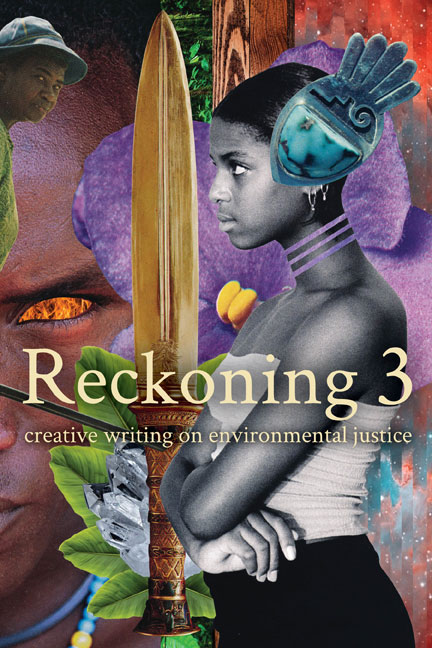
Uti’s father provides the main source of tension, which appears from the first lines of the story. Uti relates that his father is tired of being hampered by the constant presence of flood waters, that he wants to go out in his canoe and “be above the water” so that they all can be “finally in control of [their] bodies.” What Uti soon learns is that his father believes that leaving their flooded community for the “open sea” of other towns or cities is not only an “adventure” but a way of reconnecting with society that he feels has left them behind.
Joseph, Uti’s brother, is sceptical of their father’s plans to integrate into a more materially prosperous future. But Joseph is invested in technological means of advancement and adaptation. Specifically, Joseph is excited about how technology like “oxygen suits” and “decontamination pods” can improve their lifestyles, given that the flood waters seem unlikely to abate.
Perhaps with feeling similar to Uti’s death-obsession, Uti’s mother often confines herself to her room. She refuses to respond to her husband’s ideas. When the three men of the household are heading out in the canoe, Uti’s mother provides them with coats, boots, and umbrellas — the tools they need to survive the burgeoning waters, but which are insufficient. In the course of the story, two more essential tools appear: Uti trades his umbrella for a spoon, and Uti’s father acquires a gun.
These two tools — the spoon and the gun — signal the story’s resolution long before its end. This review will not further expand upon the course of events triggered by the gun. The spoon, however, provides a subtle resonance whenever it appears. It is significant that Uti rejects the practical umbrella for a spoon that seems to have no place in his adventures with his father and brother. But the spoon provides comfort when the “adventure” intensifies; Uti caresses the round edges of the spoon in moments of insecurity.
The spoon, ultimately, serves a similar purpose to the gun, but the intended use of the tool is not lost. When Uti returns home at the end of the story, it is a return to the comfort and nourishment of the home. Even when that home is falling apart. It is also a return that requires the resourcefulness and adaptability that the spoon signifies. Osahon Ize-Iyamu’s “More Sea Than Tar” suggests, then, that there is no single path to flourishing in a climate changed world. We cannot depend on isolationism, technological fixes, or even boldness. We must measure these things out with equal portions of comfort and community connection. In this way we make a home of imperfect environments.
Review: “Eclipse our Sins” by Tlotlo Tsamaase
Stories We Love
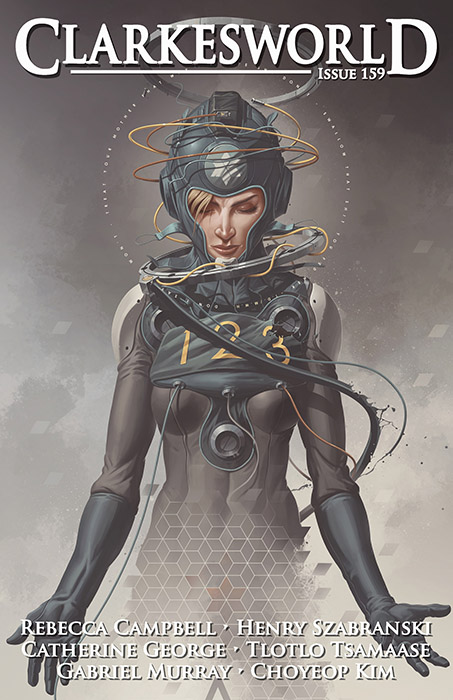
Tlotlo Tsamaase’s novelette “Eclipse our Sins” in December’s issue of Clarkesworld is a dense and lyrical story in which a young girl searches for the reason her family members are falling ill in a world wherein Mother Earth seeks revenge for a multitude of sins committed against her.
Tsamaase’s future is one in which the effects of “sins” are tangible and are explicitly connected to local ecologies. For example, xenophobic and sexist thoughts emerge into the air as smog, contributing to ecological destabilization. The protagonist, and many others in the story, wears a respirator which protects her from the material effects of anti-social elements; but requiring this protection is a burden on the poor who must not only regularly replace their respirators to survive, but are also dependent on proprietary medicines.
The fragility of the human body — as evidenced by the dependence on not only technology but also basic hygiene products and food, and the rate at which humans fall ill — is connected to the fragility of the Earth after climate change. Though Mother Earth is in a diminished state, she emerges in this story as a force to be feared in the ruthlessness with which she enacts revenge. This is a revenge that is paralleled by the ruthlessness with which humans have pursued their own interests at the expense of the ecosystems in which they exist.
The personification of the Earth is a fascinating framing device in “Eclipse our Sins.” The story opens with a prayer which invokes a distant goddess figure and makes the dire violence of the world clear. The reader gets the sense that desperate cries to “Mother Earth, Mama Earth, Mmê Earth” will not be heard or answered — that the disconnect that humans have created between themselves and the environment has theological weight. But when Mother Earth finally answers the protagonist at the end of the story and a new incantation to a new future emerges, the heady result of this prayer makes tangible both dread and hope.
Tsamaase’s novelette depicts a future that is by no means an easy one, and this story certainly stands as a warning, pointing to the frayed connections caused by both social ills and ecological ones. But the reader comes away from this story, too, with the idea that along with the rising flood waters that are called forth in the story’s final lines there is justice — and through that justice, transformation.
“Eclipse our Sins” is a complex story and we’ve barely scraped the surface in this review. If you have any thoughts about it, we’d love to read your comments on this post, through our contact page, or using the social media buttons below.
